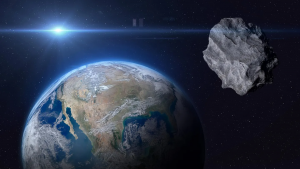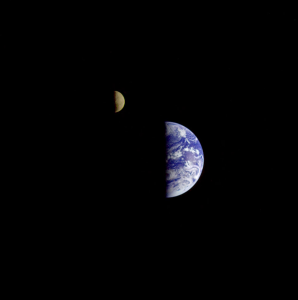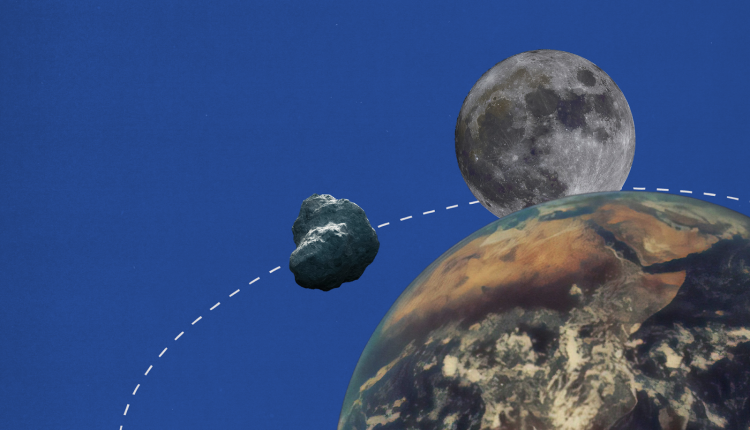Earth’s Temporary Second Moon: The Asteroid 2024 PT5
A Temporary Visitor in Earth's Orbit
This fall, Earth gained a temporary cosmic visitor in the form of a mini-moon—an asteroid named 2024 PT5. While the concept of Earth having a second moon may sound like science fiction, this is a real event happening in the skies above us. This tiny asteroid, which is part of the Arjuna asteroid belt, was captured by Earth’s gravity on September 29, 2024, and will remain in orbit until November 25, 2024. Let’s explore what makes this event so fascinating, why these mini-moons are so hard to spot, and what scientists hope to learn from them.
What Is a Mini-Moon?
A mini-moon, sometimes called a temporary satellite, is a small asteroid or space rock that gets captured by Earth’s gravity for a brief period before continuing its orbit around the sun. These mini-moons are typically part of the near-Earth object (NEO) population, which includes both asteroids and comets that orbit close to our planet.
Unlike our permanent moon, which has been Earth’s constant companion for over 4 billion years, mini-moons like 2024 PT5 only stay for a few weeks or months. They don’t settle into a stable orbit, and their visits are fleeting. As fascinating as they are, most mini-moons are far too small and dim to be easily observed by amateur skywatchers.

The Arjuna Asteroid Belt: 2024 PT5’s Origin
Asteroid 2024 PT5 belongs to the Arjuna asteroid belt, a group of space rocks that follow orbits very similar to Earth’s. These asteroids orbit the sun at roughly the same distance as Earth, about 93 million miles (150 million kilometers). The proximity of these orbits means that sometimes, the gravitational pull of Earth can capture one of these asteroids, transforming it into a temporary moon.
Carlos de la Fuente Marcos, a mini-moon expert from the Complutense University of Madrid, explains, “Some Arjuna asteroid belt objects can approach Earth at a close range of around 2.8 million miles (4.5 million kilometers) and at a relatively low velocity of less than 2,200 miles per hour (3,540 km/h).” This slow speed and close approach make it easier for Earth’s gravity to capture these objects temporarily.
However, these captures are more like a cosmic “flyby” than a permanent partnership. As Marcos describes it, if a true satellite is like a customer buying goods inside a store, objects like 2024 PT5 are merely window shoppers.
The Brief Stay of Asteroid 2024 PT5
According to data from NASA’s Jet Propulsion Laboratory Horizons system, 2024 PT5 began its temporary journey as Earth’s second moon at 3:54 p.m. EDT on September 29, 2024. However, its stay will be brief. The asteroid is expected to leave Earth’s orbit at 11:43 a.m. EDT on November 25, 2024, when it will continue its journey around the sun.
Unlike our primary moon, which takes about a month to complete one orbit around Earth, 2024 PT5 won’t even finish a full orbit during its short stay. Instead, it will follow a twisted trajectory that only slightly alters its path before it breaks free from Earth’s gravitational pull.
Why Can’t We See the Second Moon?
While the idea of a second moon might sound extraordinary, you won’t be able to see 2024 PT5 with your naked eye. In fact, even amateur astronomers using home telescopes or binoculars will struggle to catch a glimpse of it.
Why is this mini-moon so elusive? The reason lies in its size and brightness. Our permanent moon is about 2,159 miles (3,475 km) in diameter, while 2024 PT5 is estimated to be just 37 feet (11 meters) wide. That means our regular moon is about 308,108 times wider than this temporary visitor!
Because 2024 PT5 is so small and made of relatively dark, dull rock, it doesn’t reflect much sunlight, making it extremely dim. According to astronomers, observing this object requires a telescope with a diameter of at least 30 inches (76 cm) and a CCD or CMOS detector to capture the faint light. This is equipment that only professional astronomers typically have access to, meaning the average person won’t be able to spot the mini-moon from their backyard.
Why Are Mini-Moons Important?
Even though mini-moons like 2024 PT5 are small and hard to see, they offer big opportunities for scientists. These objects provide a chance to study near-Earth objects (NEOs) up close and gather data that can help us understand the dynamics of our solar system.
Mini-moons act as natural cosmic laboratories, allowing scientists to observe how small bodies interact with Earth’s gravitational field. These temporary captures also offer insights into the composition and behavior of asteroids, which is crucial for planning future space missions. Understanding how asteroids move and how they can be captured by Earth’s gravity might one day help us capture and redirect asteroids for study—or even deflect potential impact threats.
According to Richard Binzel, an astronomer at the Massachusetts Institute of Technology (MIT), “These [mini-moon] events happen with some frequency, but we rarely see them because they’re very small and very hard to detect. Only recently has our survey capability reached the point of spotting them routinely.”
Captures Like 2024 PT5: How Common Are They?
You might think that the capture of an asteroid like 2024 PT5 is a rare event, but these gravitational captures happen more often than you might expect. Scientists have officially documented several instances of “short captures,” where mini-moons are temporarily pulled into Earth’s orbit for a brief time, usually lasting around a week. These short captures are estimated to occur several times per decade.

In addition to these short captures, there have also been two documented cases of rarer “long-capture” events. In these instances, mini-moons have remained in Earth’s orbit for months, as is the case with 2024 PT5.
Perhaps even more intriguing is the possibility that some mini-moons might come back for repeat visits. For example, the 2022 NX1 asteroid became a mini-moon in both 1981 and 2022, leading scientists to believe that certain objects may return to Earth’s orbit on multiple occasions.
The Future of Mini-Moon Studies
As 2024 PT5 continues its journey around Earth and then back into space, scientists are already looking ahead to the next potential mini-moon event. The study of these temporary visitors is still in its infancy, but technological advancements in telescope surveys and skywatching tools mean that we’ll likely be able to spot more of these objects in the future.
Dr. Jennifer Millard, an astronomer and host of the Awesome Astronomy podcast, says, “This story highlights just how busy our solar system is and how much there is out there that we haven’t discovered.” She adds, “There are tens of thousands, if not hundreds of thousands, of objects out there that we haven’t discovered, and so I think this highlights the importance of us being able to continually monitor the night sky and find all of these objects.”
Looking forward, scientists hope to develop even better methods for detecting and tracking mini-moons. These small asteroids offer a unique opportunity to study NEOs without the need for costly space missions. By understanding the behavior of these objects, we can not only deepen our knowledge of our solar system but also better prepare for any potential future threats from larger asteroids.
A Visitor from the Stars
As Earth’s second moon, 2024 PT5 is a fleeting reminder of the dynamic nature of our solar system. Although we won’t be able to see it with the naked eye, knowing that it’s up there—temporarily sharing our orbit—is a humbling thought. This tiny visitor reminds us that the cosmos is full of surprises, and with continued advances in technology, who knows what other celestial wonders we’ll discover?
For now, as 2024 PT5 continues its brief stay, scientists will keep a close eye on this mini-moon, gathering data and marveling at the opportunity it presents. Who knows when the next one will arrive? One thing is certain: the sky is full of mysteries, and the universe always has another surprise waiting for us.
So, the next time you look up at the moon, remember that for a short time, it has some company—a tiny asteroid on a cosmic flyby, quietly sharing our corner of the solar system.

